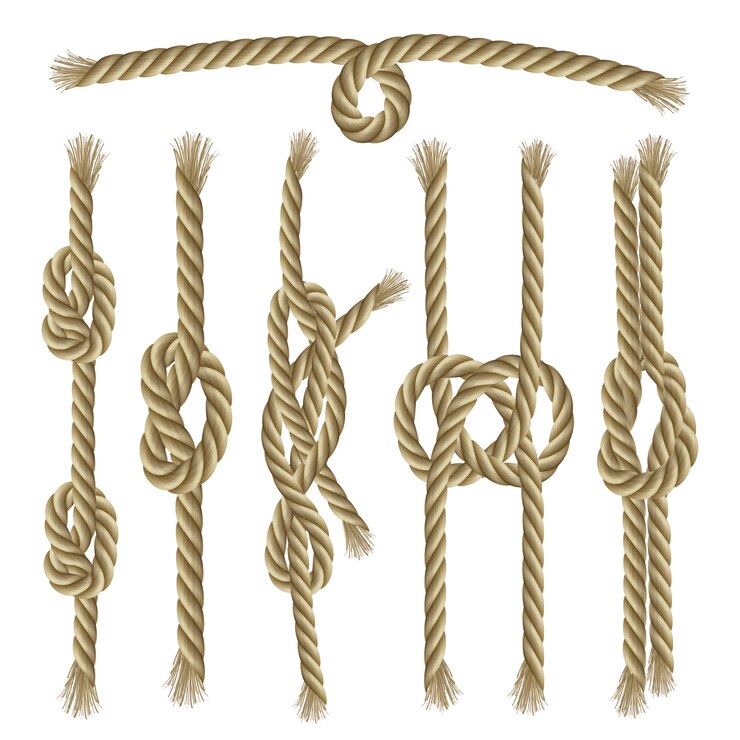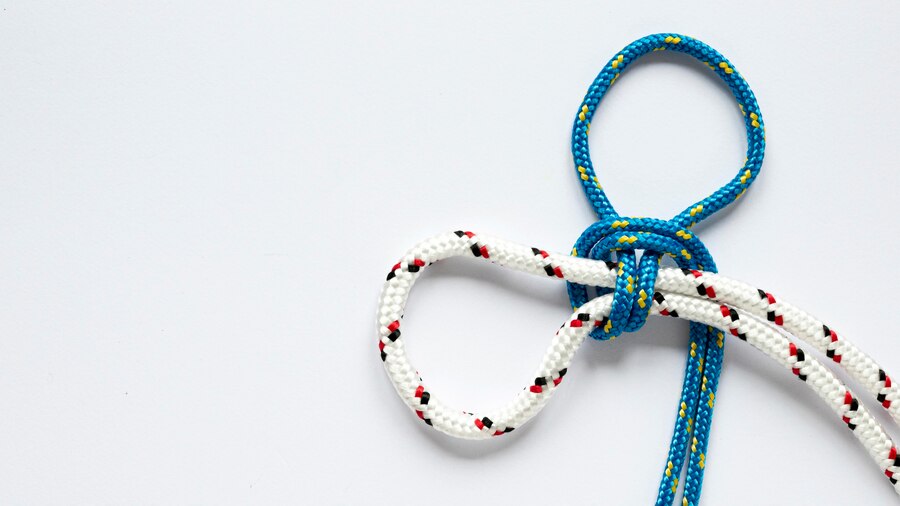When you hear about the kinds of knots pitchfork, you might think it’s only for farmers or sailors. But knowing how to tie these knots can help anyone in outdoor activities, camping, or even at home! The kinds of knots pitchfork are easy to learn and can make your life safer and more organized. Whether you’re tying things down on a trip or setting up a tent, knowing the right knots is important.
Learning the kinds of knots pitchfork is like learning a special skill that can be used in many ways. They keep your gear safe and secure, and they can even help you in emergencies. In this article, we’ll explain different types of knots that everyone should know. You’ll see how each knot works and when it’s best to use them. So, let’s dive into the world of knots and discover the magic behind them!
What Are the Kinds of Knots Pitchfork and Why Do You Need Them?

The kinds of knots pitchfork are not just for experts or professionals. These knots are simple and useful for everyone. Knowing how to tie these bunches can help you in numerous ways. Whether you’re camping, hiking, or just doing chores around the house, these knots keep things secure. They make sure ropes and materials stay in place, so you don’t have to worry about things falling apart.
There are different types of knots, and each one has a special purpose. Some knots are strong and hold heavy loads, while others are made to release quickly when needed. Learning the right knot for each task is a helpful skill. It can save time and prevent mistakes when you’re working or playing outside.
Knowing the kinds of knots pitchfork also helps you feel more confident. Once you get the hang of tying these knots, they become easier. The more you practice, the better you will be at using them in different situations.
The Overhand Knot: A Simple and Useful Kind of Knot Pitchfork
The Overhand Knot is one of the easiest knots to learn. It’s often used as a stopper knot, which means it prevents ropes from slipping through loops. This knot is very helpful in situations where you need a quick and simple solution. You can tie it in just a few steps, making it perfect for beginners.
To tie an Overhand Knot, start by making a loop in the rope. Then, pass the working end of the rope through the loop and pull it tight. That’s it! Even though it’s easy to tie, the Overhand Knot is useful in many situations. For example, you can use it to keep things from slipping when you’re setting up a tent or tying a package.
While the Overhand Knot is simple, it’s also strong enough to be relied on in basic tasks. It’s also a great knot to use as the first step for more complicated knots. So, it’s a must-know for anyone working with ropes.
How to Tie the Figure-Eight Knot: A Strong Kind of Knot Pitchfork
The Figure-Eight Knot is another great knot to learn, especially if you want something that can handle heavy loads. This knot is strong and reliable, making it perfect for climbing, sailing, and other outdoor activities. When tied correctly, it forms a loop that doesn’t slip, even under pressure.
To tie a Figure-Eight Knot, start by creating a simple “8” shape with the rope. Then, pass the working end of the rope through the loop and pull it tight. It’s not difficult to recollect and fast to tie.The Figure-Eight Knot is a favorite because it stays secure even when used with heavy loads, and it’s easy to untie when you’re done.
Mastering the Figure-Eight Knot gives you more confidence in your knot-tying skills. It’s a great knot for adventurers who need to secure things safely. Whether you’re connecting two ropes or tying equipment down, this knot is a reliable choice.
Bowline Knot: The King of Kinds of Knots Pitchfork

The Bowline Knot is known as the “king of knots” for a good reason. It creates a loop at the end of the rope that doesn’t slip or tighten, even under heavy stress. This makes it ideal for securing gear, rescuing people, or anything where you need a strong, reliable loop.
To tie a Bowline, make a small loop with the rope. Then, pass the working end through the loop from underneath, wrap it around the standing part, and thread it back through the loop. After you pull it tight, the loop stays in place and won’t slip. The Bowline is often used in climbing and sailing because of its strength and ability to be untied easily after use.
This knot is very versatile. It’s used in emergencies, outdoor adventures, and everyday tasks. With a little practice, you can tie the Bowline quickly and confidently. The more you use it, the more it becomes a staple in your knot-tying toolkit.
Clove Hitch Knot: A Versatile Kind of Knot Pitchfork for Beginners
The Clove Hitch Knot is perfect for beginners and experienced knot-tyers alike. It’s very easy to learn and can be used in many different situations. The Clove Hitch is often used to tie a rope to a post, tree, or any other anchor point. It’s great for when you need to adjust the tension of the rope as you go.
To tie the Clove Hitch, start by wrapping the rope around the anchor point twice. One of the wraps should cross over the other, forming an X shape. From that point forward, fold the functioning end under the two wraps and pull it tight. It’s simple, fast, and easy to adjust as needed.
One of the best things about the Clove Hitch is how easily it can be changed. You don’t need to untie everything if you want to adjust the rope. However, make sure not to use it for climbing or other high-risk activities, as it can slip if the rope shifts too much.
Key Features of the Clove Hitch Knot:
- Easy to tie and adjust
- Works well for static loads
- Great for camping and securing tents
Square Knot: The Binding Kind of Knot Pitchfork Everyone Should Know
The Square Knot, also called the Reef Knot, is a very important knot to learn. It’s straightforward and compelling for integrating two ropes.It’s often used in first aid for bandaging wounds or in sailing to join ropes.
To tie a Square Knot, follow this simple pattern: right over left, then left over right. This will create a strong bond that holds tight. The Square Knot is especially useful when you need to tie ropes of equal thickness. Once tied, it stays secure but is easy to untie when you need to.
While the Square Knot is simple, it’s a very helpful knot to have in your toolkit. It’s fast to tie, easy to undo, and works in many different situations. With just a little practice, you’ll be able to tie it quickly and confidently.
Conclusion: Mastering Knots for Everyday Use
Learning the kinds of knots pitchfork is not only fun but also very useful. Knowing how to tie different knots can help you in many situations, whether you’re playing outside, camping, or just working around the house. The more you practice, the easier it will be to tie knots quickly and correctly. So, take your time to learn each knot, and soon you’ll be a knot-tying expert!
By practicing knots like the Overhand, Figure-Eight, and Bowline, you can feel more confident and safe when using ropes. These knots are simple to learn and can make your life a lot easier. Keep practicing, and you’ll be ready to handle any task that comes your way, no matter where you are!



